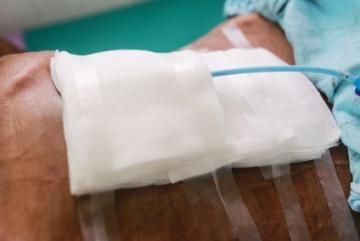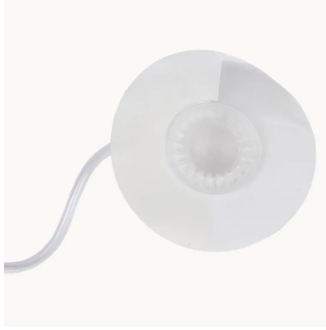It is normal for the wound to drain fluid from the incision site after surgery. Drainage is a common treatment during wound healing and the fluid tends to be thin and pinkish, however, sometimes the drainage lasts for a long time depending on the depth or extent of the wound. It can help remove blood and fluid from around wounds, reduce the risk of wound infection, and promote wound healing. Different types of wound drainage are suitable for different types of wounds. Below is a detailed description of the different types of wound drainage.
Open wound drainage is a treatment commonly used to manage open wounds. Open wounds refer to wounds where the surface of the wound communicates with the outside world, such as cut wounds, gunshot wounds, and car accident wounds. Open wound drainage usually consists of a drainage tube and a wound dressing. Drains draw fluid and blood around the wound out of the wound, while a wound dressing keeps the wound clean and dry. This approach can help prevent infection and promote wound healing.
Closed wound drainage :
Closed wound drainage is often used to treat closed wounds, such as ulcers, sores, and other conditions. Closed wound drainage is usually achieved by placing a drainage bag over the wound surface. Drainage bags hold fluid and blood around the wound and drain it out of the wound. This approach reduces the risk of wound infection while the wound dressing remains clean and dry.
Site-specific wound drainage :
Site-specific wound drainage is often used to manage certain types of wounds, such as facial wounds, hand wounds, foot wounds, etc. Site-Specific Wound Drainage Special drainage devices can be designed according to the location and shape of the wound to ensure optimal drainage. This approach can help prevent infection and promote wound healing.
Negative pressure wound drainage :
Negative pressure wound drainage is a method of draining wounds by utilizing the principle of negative pressure. In negative pressure wound drainage, the tissues surrounding the wound are subjected to negative pressure, causing fluid and blood to be drawn out of the wound. This approach can help prevent infection and promote wound healing.
In general, different types of wound drainage are suitable for different types of wounds. When treating the wound, the doctor will according to the wound.
You also need to understand your own injuries :
Knowing your injury is very important when choosing a wound drainage method. If the injury is serious, especially if it is infected, open wound drainage or suture wound drainage should be considered in preference to negative pressure wound drainage. Also, if the injury is close to a nerve or vital organ, open wound drainage should be preferred because it reduces pressure on the nerve or organ.
In conclusion, choosing the wound drainage method that is right for you depends on the individual situation and the severity of the injury. Understanding the basic principles of wound drainage and how to choose the right wound drainage method for you can help you manage wounds better and speed up healing.
For more information on Innomed® Negative Pressure Dressing, refer to the previous articles. If you have customized needs, you are welcome to contact us; we will serve you wholeheartedly. At Longterm Medical, we transform this data by innovating and developing products that make life easier for those who need loving care.
Editor: kiki Jia
Date: April 21, 2023

 English
English عربى
عربى Español
Español русский
русский 中文简体
中文简体








